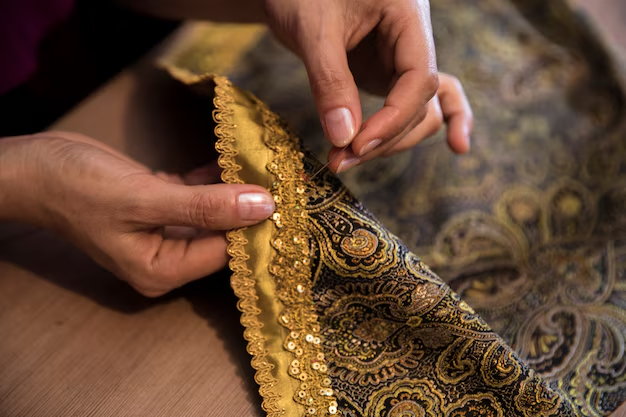
Culture is the collective identity of a group of people, encompassing their beliefs, values, customs, and traditions. It is shaped by history, geography, religion, and social factors, and plays a profound role in influencing the way individuals and communities express themselves. One of the most powerful forms of this expression is through art and music. These forms of creative expression have been pivotal in shaping societies throughout history, serving not only as outlets for personal emotions and thoughts but also as reflections of cultural identity.
In this article, we will explore how culture influences art, music, and expression, and how these forms of creativity are deeply intertwined with the values, struggles, and triumphs of the cultures from which they emerge.
1. Art as a Cultural Reflection
Art is often seen as a direct reflection of the culture in which it was created. From cave paintings in prehistoric times to modern street art, every piece of art tells a story—whether it’s about the people, the environment, or the ideas of the time. Artists throughout history have used their work to comment on society, challenge norms, and express the collective identity of their communities.
- Traditional Art Forms: Different cultures have developed unique art forms that reflect their values and history. For example, Chinese calligraphy, Native American totem poles, or African tribal masks are all deeply connected to cultural practices and beliefs.
- Social and Political Commentary: Art has also served as a tool for challenging societal norms and addressing political issues. The works of artists like Picasso, Goya, and contemporary street artists often reflect the political and social struggles of their time, offering a window into the cultural context they were created in.
- Cultural Narratives: Art often carries the stories of a culture. Mythology, religion, and folklore are frequently depicted in visual art, allowing viewers to understand the values, beliefs, and struggles of different communities. These narratives can serve as both a historical record and a symbol of cultural pride.
2. Music as a Voice of Culture
Just as art reflects culture, music is a universal form of expression that speaks to the soul of a society. Music often carries the emotional weight of a culture’s past, its present struggles, and its aspirations for the future. It’s deeply connected to social movements, celebrations, and rituals, providing a soundtrack to the lives and experiences of its people.
- Folk Music and Traditional Instruments: Many cultures have their own unique sounds and instruments that embody their heritage. For instance, flamenco in Spain, gamelan music in Indonesia, and samba in Brazil use traditional instruments that reflect their cultural roots. These musical styles are not just entertainment but expressions of cultural identity and history.
- Music as Social Commentary: Much like art, music has been used to comment on societal issues and injustices. The civil rights movement in the United States, for example, was fueled by powerful songs like “We Shall Overcome,” which became an anthem for the movement. Music continues to play a central role in protests and social change, from reggae in Jamaica to hip-hop in the United States.
- Global Fusion: In today’s interconnected world, music is no longer confined to regional boundaries. The fusion of various musical styles, such as jazz combining African rhythms with Western instruments or the popularity of K-pop globally, shows how cultures influence each other and how music can be a melting pot of different cultural sounds.
3. Expression Through Dance and Performance
Dance and performance art are some of the most dynamic forms of cultural expression. These art forms are deeply tied to a community’s traditions, rituals, and ways of celebrating life. Through movement and rhythm, people express emotions, tell stories, and preserve cultural heritage.
- Traditional Dance Forms: Ballet in Europe, Bharatanatyam in India, and Hula in Hawaii are just a few examples of how dance forms reflect cultural history. These dances are not just performances; they are an embodiment of a culture’s history, spirituality, and values.
- Dance as a Political Tool: Dance has also been used as a form of resistance and protest. For example, the Black Power movement in the U.S. used dance as a form of empowerment, with movements like the Harlem Renaissance influencing the cultural landscape. Dance can also be a way to preserve history, as seen in indigenous dances that tell stories passed down through generations.
- Modern Expression: In contemporary culture, dance continues to evolve, often blending traditional movements with modern styles. Hip-hop and breakdancing, for instance, emerged as forms of expression within marginalized communities, providing a platform for people to communicate their experiences and aspirations.
4. The Global Influence of Culture on Art and Music
As the world becomes more interconnected, cultures are influencing each other more than ever. The internet, social media, and global trade have facilitated the exchange of ideas, allowing art, music, and expression to spread across borders.
- Cultural Exchange and Collaboration: Artists, musicians, and performers from different cultures collaborate to create new, hybrid forms of art. For instance, Bollywood music and Western pop music have come together in collaborations that bring together diverse audiences and create global hits.
- Cultural Appropriation vs. Appreciation: With global influence comes the challenge of cultural appropriation—when one culture adopts elements of another culture in a way that disrespects or misrepresents it. It’s important to recognize the fine line between appreciating and respecting cultural expression and appropriating it for profit or personal gain.
- Preserving Cultural Heritage: As cultures become globalized, there is a growing effort to preserve traditional art forms and music. Organizations, governments, and artists are working to ensure that cultural expressions are maintained and respected in the face of commercialization and global influence.
5. The Future of Cultural Expression in Art and Music
As technology continues to advance, so too will the ways in which culture is expressed through art and music. Digital tools, virtual reality, and artificial intelligence are providing new platforms for creative expression, allowing for global collaboration and innovation. However, the question remains: how will these advances affect the preservation of cultural traditions?
While technology can facilitate cultural exchange, it’s crucial to remember that culture is deeply rooted in community, history, and identity. As cultures continue to evolve, the challenge will be to balance innovation with the preservation of traditions that define us.
Conclusion
Art, music, and expression are powerful vehicles for reflecting and shaping culture. They serve as a window into the values, struggles, and triumphs of societies, preserving history while also pushing forward into the future. Whether through traditional art forms, political music, or dance, cultural expression remains a vital part of our global narrative. As we continue to embrace the diversity and richness of cultures around the world, we can better understand and appreciate the art and music that define them.



